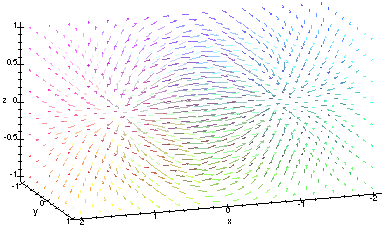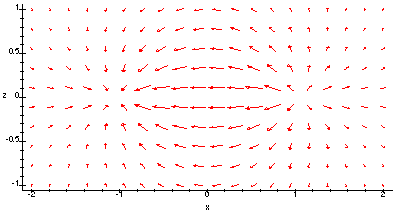
Using Maple, we have:
phi:=ln(sqrt(((x-1)^2+y^2+z^2+0.09)/((x+1)^2+y^2+z^2+0.09)));

Now if we plot the gradient of this, in Maple, we obtain:
with(plots):
gradplot3d(phi,x=-2..2,y=-1..1,z=-1..1,axes='FRAMED',
arrows='SLIM',grid=[16,8,8],
orientation=[71,76],scaling='CONSTRAINED');

We can see a field source at (1,0,0) and a field sink at (-1,0,0).
In order to make it clearer, lets consider the field in the xz-plane.
Using Maple to substitute y = 0 into phi, one obtains:
phi_xz:=subs(y=0,phi);

If we then plot the gradient of this field in 2-dimensions, using Maple,
we obtain:
gradplot(phi_xz,x=-2..2,z=-1..1,arrows='SLIM',axes='FRAMED',
scaling='CONSTRAINED',grid=[20,10],color='RED');

We see that when x = 0, the field lines become parallel, indicating that the divergence is zero on the yz-plane. Therefore, the divergence of the gradient of phi is zero on the yz-plane, and this is just the Laplacian of phi. We can now see why the Laplacian of phi is zero when x = 0.